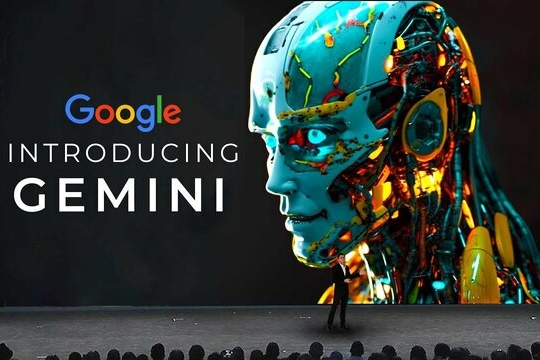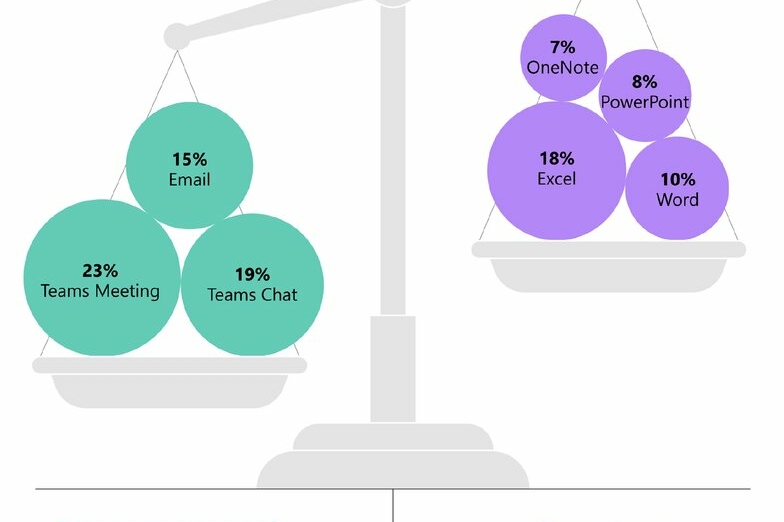Statista’s Artificial Intelligence Digital Market Outlook 2021 is an in-depth report on the state of the AI ecosystem. The outlook goes into depth on the major players, the application of AI technologies in various industries, the major players and the future of artificial intelligence.
The Statista Artificial Intelligence Digital Market Outlook 2021 includes:
- Definition, evolution & revenue potential
- Technology, trends & drivers
- Application of AI in different industries
- Funding, M&A & competitive landscape: Amazon, Apple, Baidu, ebay.
Key Takeaways: Statista’s Artificial Intelligence Digital Market Outlook 2021
Definitions
Artificial intelligence (AI) essentially refers to computing technologies that are inspired by the ways people use their brains and nervous systems to reason and make decisions, but typically they operate quite differently.
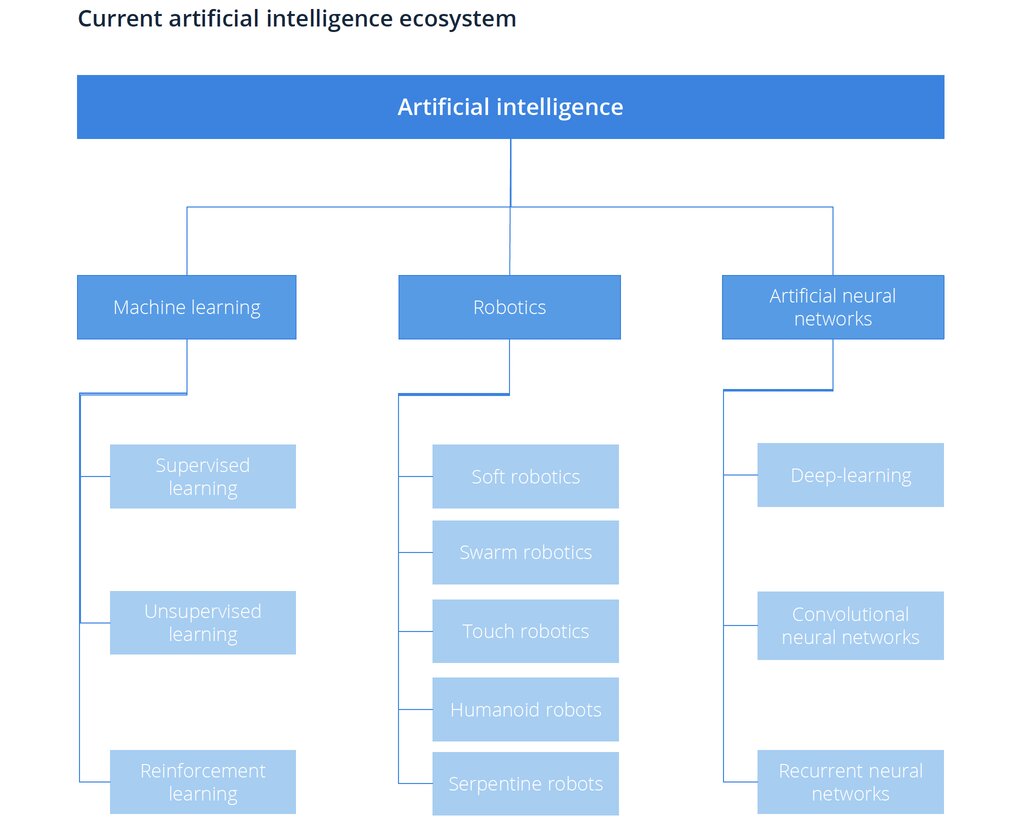
There are three main types of artificial intelligence
Machine learning
This involves designing new learning algorithms and improving existing ones to enable computers to act without explicit programming. These algorithms allow computers to analyze large volumes of complex data to recognize patterns and make predictions and adjustments.
The different types of machine learning are:
▪ Supervised learning
▪ Unsupervised learning
▪ Reinforcement learning
Robotics
This branch of technology is concerned with developing and training robots to interact with people and the world in general in predictable ways. However, current efforts also revolve around using deep learning to train robots to manipulate situations and act with a certain degree of self-awareness.
The main fields within robotics are:
▪ Soft robotics
▪ Swarm robotics
▪ Touch robotics
▪ Humanoid robots
▪ Serpentine robots
Artificial neural networks (ANNs)
This area is concerned with developing algorithms that mimic the functioning of the neocortex area of the human brain, where all the thinking occurs. This comparison is not entirely correct because in a human brain, neurons are not arranged in a linear sequence, as is the case with ANNs.
There are three different types of ANNs:
▪ Deep-learning
▪ Convolutional neural networks
▪ Recurrent neural network
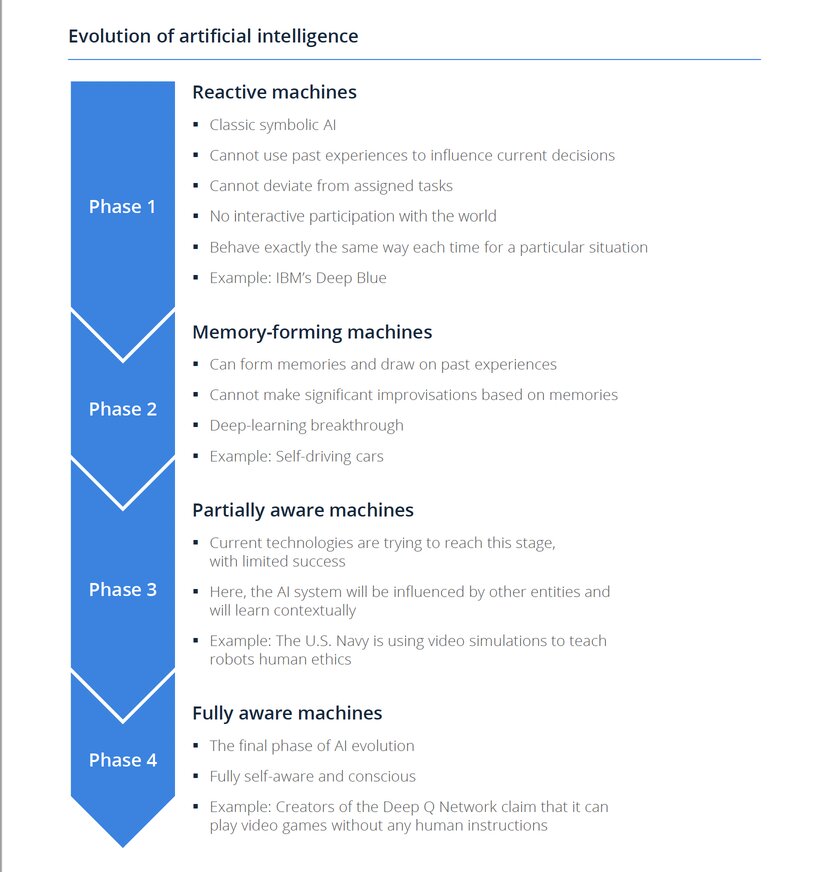
Leading use cases for AI in 2020
- Automated customer service agents – 11.3%
- IT automation – 6.3%
- Sales process, recommendation & automation – 7.1%
- Automated threat intelligence & prevention – 6..6%
- Fraud analysis and investigation – 6.1%
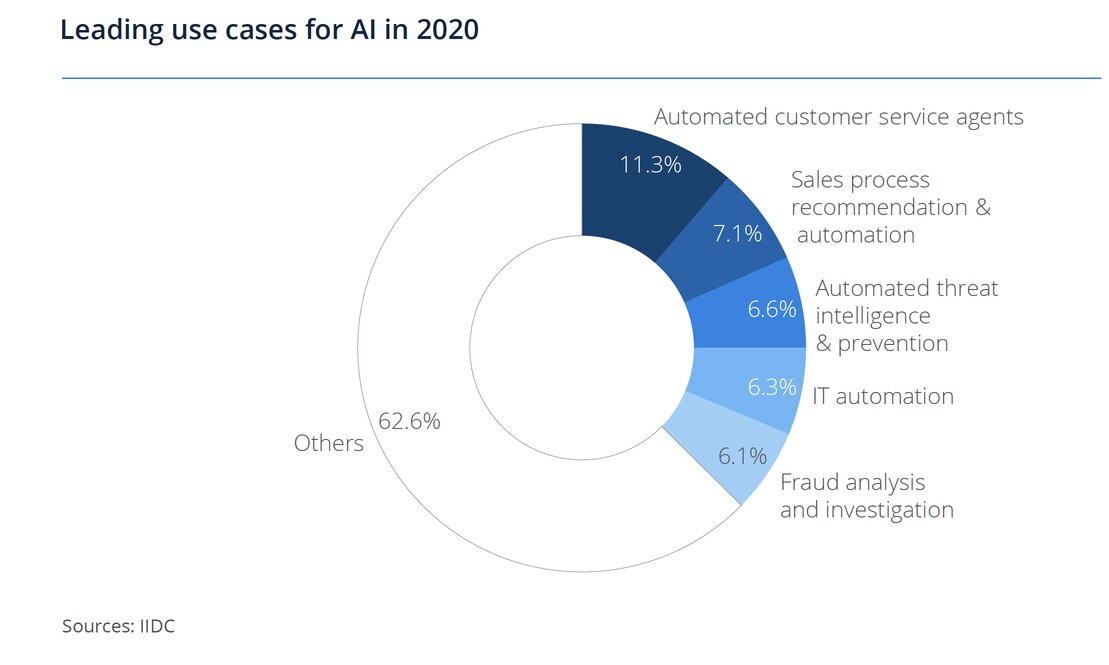
A study by Accenture and Frontier Economics expects AI to have a big impact on a country’s gross
value added (GVA). It estimates the annual GVA growth rates in 2035 for a baseline state, based on
current assumptions regarding economic growth, and for an AI steady state, assuming artificial
intelligence is integrated into economic processes. The extent of the impact depends on the country, ranging from a 0.8 percentage points increase in potential GVA growth rates in Italy or Spain to 2.0 percentage points in Finland or the U.S.

AI can boost manufacturing output by almost US$4 trillion
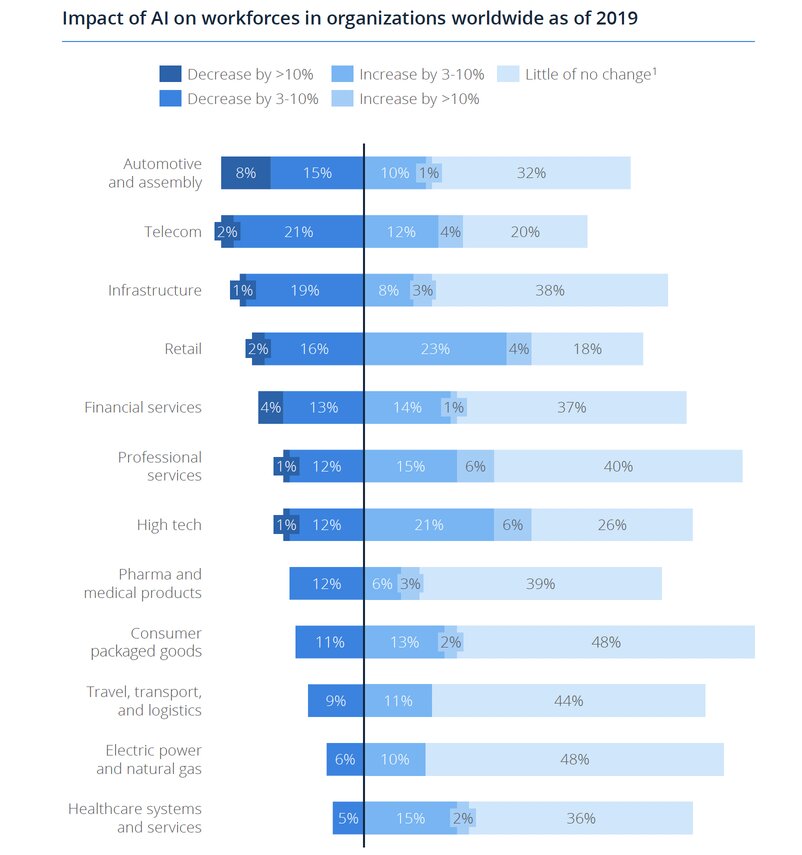
Machine Learning
In machine learning, programs learn from existing data and apply this knowledge to new data or use it to predict data. Machine learning involves designing new learning algorithms and improving existing ones to enable computers to act without explicit programming. These algorithms allow computers to analyze large volumes of complex data and are used to complete tasks like classification, regression, clustering, etc.
The different types of machine learning are:
▪ Supervised learning:
These techniques train the system to respond appropriately to particular stimuli. For this, the learning algorithm is fed with a series of inputs as well as with the corresponding outputs. The algorithm then applies this same set of rules in the future.
▪ Unsupervised learning:
Here, the system is not provided with the right answer but is expected to learn by itself. It does this by exploring the data on its own to find some sort of structure or patterns. In other words, the AI system uses its experience of solving one problem to solve another related problem. This type of machine learning can be applied to identify consumers with similar purchasing behaviors in order to deliver personalized marketing, for example.
▪ Reinforcement learning:
Inspired by behaviorist psychology, the algorithm learns through a trial and error process in which the actions are either virtually ‘rewarded’ or ‘punished’. It then forms a memory of each experience and uses this learning for subsequent experiences. DeepMind’s (a Google AI company) win over the world champion in the game of Go is an example of reinforcement learning.
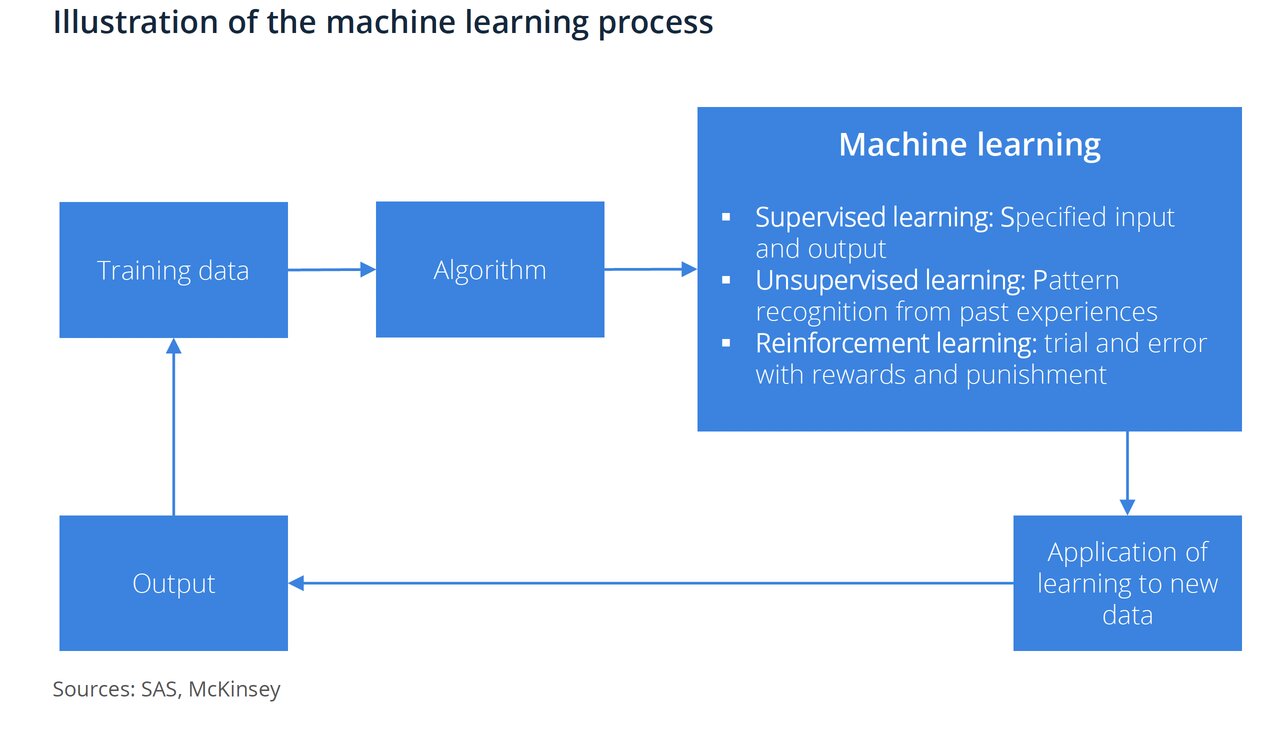
Natural Language Processing
Natural language processing (NLP) is a branch of AI that deals with the interpretation and manipulation of human language by computers.
Artificial neural networks (ANNs)
Artificial neural networks mimic the working of a brain
Artificial neural networks (ANNs) are built to mimic the working of a human brain. Connected units (artificial neurons) are organized in layers to process information. Each unit can transmit a signal to another unit and thereby simulate a human brain. While neurons in a brain, however, are connected in a complex and unpredictable manner, artificial neurons are arranged in a linear sequence. The overall process of converting input into output is based on the programming of each neuron
There are three types of artificial neural networks:
▪ Deep-learning: These algorithms have many layers of neural networks which process information at many levels. Before the advent of deep-learning, ANNs often only had three layers, unlike deep learning networks, which usually have over 10 layers. This branch of machine learning is especially important because it is the first family of algorithms that does not require manual intervention.
Convolutional neural networks (CNN):
These are very similar to ordinary neural networks in their overall working. The only difference is that the connections between neural layers are similar to those seen in the animal visual cortex, the part of the brain that processes images. These architectures are programmed to perceive each input as an image. In the 2012 ImageNet visual recognition contest, the only entry using a CNN achieved an 84% correct score, compared to 75% the year before. Since then, they have won all subsequent ImageNet contests, exceeding human performance in 2015 with a score of 90%.
Recurrent neural network (RNN):
These neural networks differ from others in terms of their architecture. Their neurons are connected to each other, thereby allowing them to send feedback signals to each other. Here, the information travels in loops from layer to layer so that each bit of information can be stored as memory and the network can exhibit dynamic behavior. It is due to this that RNNs have been found to be apt for natural language processing applications
China is global leader in AI Research
In terms of global AI start-up funding, even though the U.S. leads the world with a share of 58% in Q2’20, it is followed closely by China at 19%. China also developed its first ‘national laboratory for deep learning’ in 2017.

Drivers
The amount of big data being generated by today’s increasingly digitized economy is growing at a rate of 40% each year and is expected to reach 163 trillion gigabytes by 2025. This growth in big data is driving the improvement of AI algorithms.
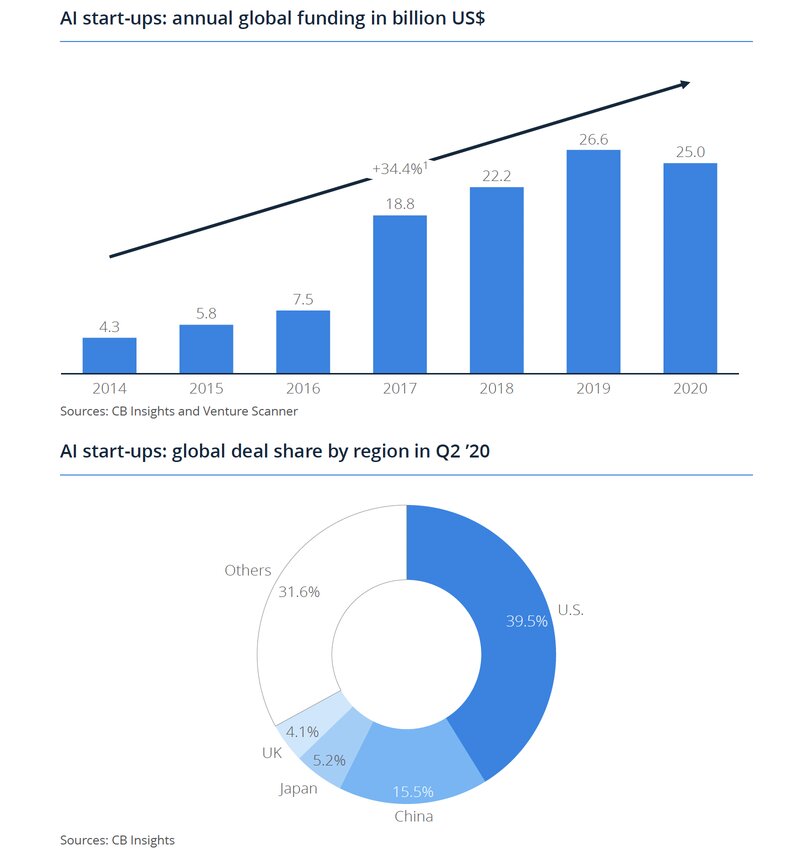
Corporate venture capital funding for AI fell marginally by 2% in 2020
According to CB Insights, even though CVC-backed deals and funding to AI companies fell for the first time in five years in 2020, the decline was only marginal at 2% to US$11.2 billion from an all-time high of US$11.5 billion in 2019. The total funding over the period 2016–2020 increased at a CAGR of almost 47%, while the number of deals more than doubled from 211 to 437.
Need help with developing a digital strategy for your business? Get in touch.
